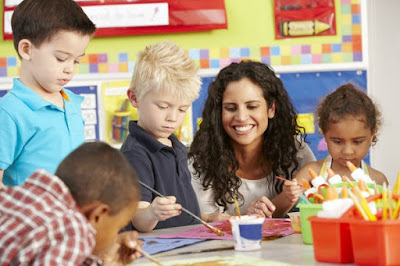Who requires special education
Mentioning provincial, nationwide and worldwide information, our research study discovered that roughly 13 percent of the kindergarten to Quality 12 trainee populace needs unique education and learning solutions. And kids with reduced socio-economic condition go to a considerably greater danger for unique education and learning positioning.
These numbers are based upon the provincial, nationwide and worldwide information we utilized — what's real in the U.S. and U.K. likewise stands up in the Canadian context.
Regarding 60 percent of trainees that get unique education and learning have requirements in locations such as language, psychological and behavioural policy or scholastic efficiency.
These are locations where problems rapidly ended up being advancing, triggering kids to autumn additional and additional behind, ultimately needing expensive treatments to assist them capture up. For instance, a language hold-up outcomes in interaction issues, disintegration of self-confidence, peer seclusion and accomplishment shortages.
All these locations could be considerably affected by precautionary education and learning at the youngest ages.
In the U.S., a research study group just lately accepted our searchings for regarding the efficiency of very early youth education and learning for decreasing the require for unique education and learning treatments.
This group discovered very early youth education and learning decreased involvement in unique education and learning programs by greater than 8 percent, reduced quality retention by 8.29 percent and enhanced secondary school college graduation by over 11 percent.
Proof from the U.K.
Research study from the U.K. enabled us to go also additional in structure the disagreement for the pre-emptive nature of high top quality very early youth education and learning. The group contracted a scientist that was component of the Efficient Arrangement of Pre-School Education and learning Job in the U.K. This job tracked greater than 3,000 kids from 1997 to 2015.
We re-examined the information readied to track the complete institution experience for those kids.
We had the ability to determine that dropped greater than one basic discrepancy from the imply on steps of scholastic accomplishment and psychological and behavioural policy.
And we had the ability to contrast this specific sub-set of kids to those in the manage team without very early youth education and learning. On this basis, we had the ability to additional analyze out the effect of top quality versus low-grade very early youth education and learning.
We after that discovered that by completion of secondary school, this decrease in danger for scholastic achievment was 40 percent for those with low-grade very early youth education and learning versus a 55 percent decrease for those that had a top quality very early education and learning experience.
Comparable however much less remarkable reductions happened for wellness and social or behavior dangers. High top quality of very early youth education and learning was a much more considerable consider the decrease of social and behavioural dangers, particularly by completion of primary school.
These kids had enhanced peer communications, pro-social behaviors and the capcapacity to comply with guidelines and regimens. Enhancements in handling their behaviors and feelings enabled higher institution success. Prediksi Togel Singapore Terjitu Tanggal 5/12/2020
For instance, kids with low-grade very early youth education and learning had a 5 percent decrease in danger for wellness issue at age 11. However those with top quality very early youth education and learning had a 39 percent decrease in danger for the exact very same issue.
Teachers, moms and dads, policy-makers and federal governments might take advantage of these searchings for and think about the effect of focusing on high top quality very early youth education and learning in redirecting the trajectory of young children's lives.



